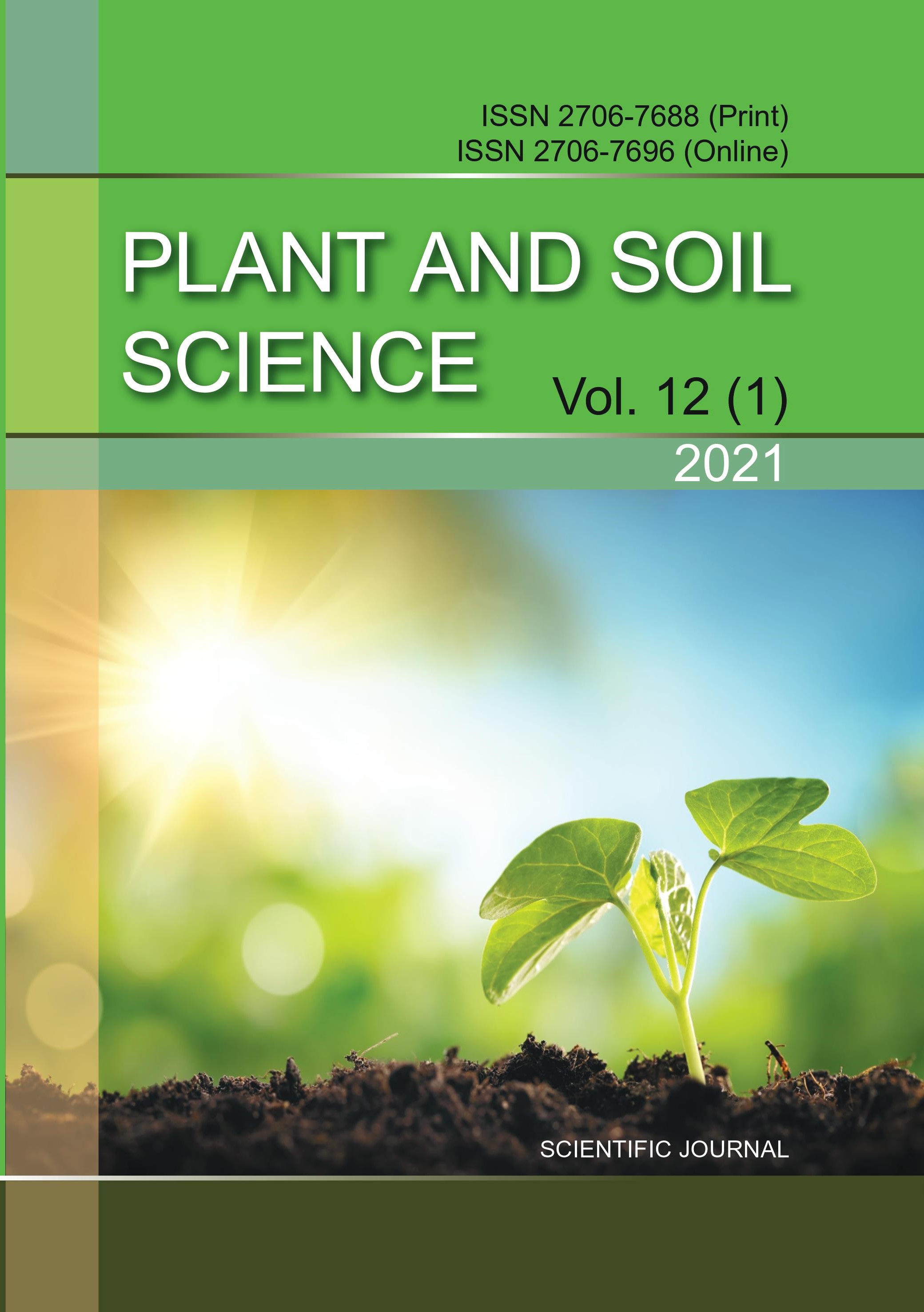Economic and energy efficiency of growing different varieties of meadow clamp for feed purposes
DOI:
https://doi.org/10.31548/agr2021.01.018Keywords:
bioenergy coefficient, costs of funds and energy, economic and energy efficiency, cost recovery, profitability, cost, net profitAbstract
Establish changes in the indicators of economic and energy efficiency of growing different varieties of clover for fodder purposes, depending on the methods of sowing, inoculation of seeds with nodule bacteria and fertilizers. Methods. Field and laboratory - for research in the field and laboratory conditions, analytical - to determine the chemical composition of the dry biomass of meadow clover, calculated - to determine the indicators of economic and energy efficiency. Growing meadow clover for fodder purposes on chernozems of typical low-humus northern part of the Right-Bank Forest-Steppe of Ukraine is profitable. Regardless of the elements of technology, it provides 14962-23743 UAH of net profit with a profitability of 88-259 % and the cost of 1 ton of feed units – 1415-2662 UAH and crude protein – 5363-10265 UAH, payback of energy consumption per 1 ha gross energy (KEE) – 6.2-9.0 and the output of 1 ha of exchange energy (BEC) – 3,2-4,6, as well as energy costs per 1 ton of feed units 2.86-4.20 GJ. The best indicators of economic and energy efficiency of meadow clover cultivation are provided by the Typhoon variety by inoculation of seeds with nodule bacteria on a background without fertilizers. Additional application of P60K90 or N60P60K90 on the background of inoculation, which is necessary to maintain soil fertility, worsens them, reducing the net profit by 3486-5943 UAH / ha.References
Babich, A. A., Motornyy, D. K. (1986). Resurso- i energosberegayushchiye tekhnologii proizvodstva, khraneniya i ispol'zovaniya kormov (Pod red. M. V. Zubtsa). [Resource and energy saving technologies for the production, storage and use of feed (Ed. By M. V. Zubets)]. Kуіv: Urozhay, 104.
Kurhak, V. H. (2010). Luchni ahrofitotsenozy. [Meadow agrophytocenoses]. K.: DIA, 374.
Blagoveshchenskiy, G. P. (1995) Formirovaniye energosberigayushchikh agrozoo- ekosistem. [Formation of energy-saving agro-ecosystems]. Kormoproizvodstvo. № 4. P. 8-11.
Nebol'sina, A. N., Nebol'sin, Z. P. (1996) Sistemy ekonomicheskoy optimizatsii doz mineral'nykh udobreniy na kul'turnykh senokosakh i pastbishchakh s uchetom yekonomicheskikh faktorov. [Systems of economic optimization of doses of mineral fertilizers in cultivated hayfields and pastures, taking into account economic factors]. Agrokhimiya. 1996. № 4. P. 56-62.
Andreyev, A. V., Zotov, A. A. (1985). Organizatsiya kul'turnykh pastbishch v promyshlennom zhivotnovodstve. [Organization of cultural pastures in industrial animal husbandry]. Moskva: Agropromizdat, 240.
Kutuzova, A. A., Koz'minykh, N. V. (1998). Vliyaniye sistem vedeniya senokosov na ikh produktivnost', effektivnost' udobreniy i vynos elementov pitaniya. [Influence of haymaking systems on their productivity, fertilizer efficiency and removal of nutrients]. Agrokhimiya, № 2. P. 60-64.
Yarmolyuk, M. T., Kurhak, V. H. ta in. (2013). Ahroekobiolohichni osnovy stvorennya ta vykorystannya luchnykh fitotsenoziv. [Agroecobiological bases of creation and use of meadow phytocenoses]. Lʹviv: Spolom, 2013. 304.
Voloshyn, V. N. (2018) Formuvannya ta efektyvne vykorystannya luchnykh travostoyiv na siromu lisovomu grunti pravoberezhnoho lisostepu. [Formation and effective use of meadow grasslands on the gray forest soil of the right-bank forest-steppe. Author's ref. dissertation for the degree of Candidate of Agricultural Sciences]. Avtoref. dys.. na zdobuttya naukovoho stupenya k. s.-h. n. Chabany, 22.
Prorochenko, S. S. (2020). Produktyvnistʹ lyutserno-zlakovykh travosumishey zalezhno vid udobrennya v Lisostepu Pravoberezhnomu. Avtoref. dys.. na zdobuttya naukovoho stupenya k. s.-h. n. [Productivity of alfalfa-cereal grass mixtures depending on fertilizer in the Forest-Steppe Right Bank. Author's ref. dissertation for the degree of Candidate of Agricultural Sciences]. Vinnytsya, 24 .
Medvedovsʹkyy, O. K., Ivanenko, P. I. (1988) Enerhetychnyy analiz intensyvnykh tekhnolohiy v silʹsʹkohospodarsʹkomu vyrobnytstvi. [Energy analysis of intensive technologies in agricultural production]. Kуіv : Urozhay, 1988. 206.
Kulyk, M. F. (1997). Metodyka bioenerhetychnoyi otsinky tekhnolohiy vyrobnytstva produktsiyi tvarynnytstva i kormiv. [Methods of bioenergy assessment of technologies for the production of livestock products and feed.]. Vinnytsya, 1997. 54.
Proektuvannya tekhnolohiy ta rozrakhunok vytrat na vyroshchuvannya silʹsʹkohospodarsʹkykh kulʹtur. Navchalʹnyy posibnyk / Za red. H.YE. Maznyeva. KH.: Maydan, 2009. 257.
Metodyka provedennya doslidiv po kormovyrobnytstvu / Pid red. A. O. Babycha. Vinnytsya, 1998. 79.
Downloads
Published
Issue
Section
License
Relationship between right holders and users shall be governed by the terms of the license Creative Commons Attribution – non-commercial – Distribution On Same Conditions 4.0 international (CC BY-NC-SA 4.0):https://creativecommons.org/licenses/by-nc-sa/4.0/deed.uk
Authors who publish with this journal agree to the following terms:
- Authors retain copyright and grant the journal right of first publication with the work simultaneously licensed under a Creative Commons Attribution License that allows others to share the work with an acknowledgement of the work's authorship and initial publication in this journal.
- Authors are able to enter into separate, additional contractual arrangements for the non-exclusive distribution of the journal's published version of the work (e.g., post it to an institutional repository or publish it in a book), with an acknowledgement of its initial publication in this journal.
- Authors are permitted and encouraged to post their work online (e.g., in institutional repositories or on their website) prior to and during the submission process, as it can lead to productive exchanges, as well as earlier and greater citation of published work (See The Effect of Open Access).

